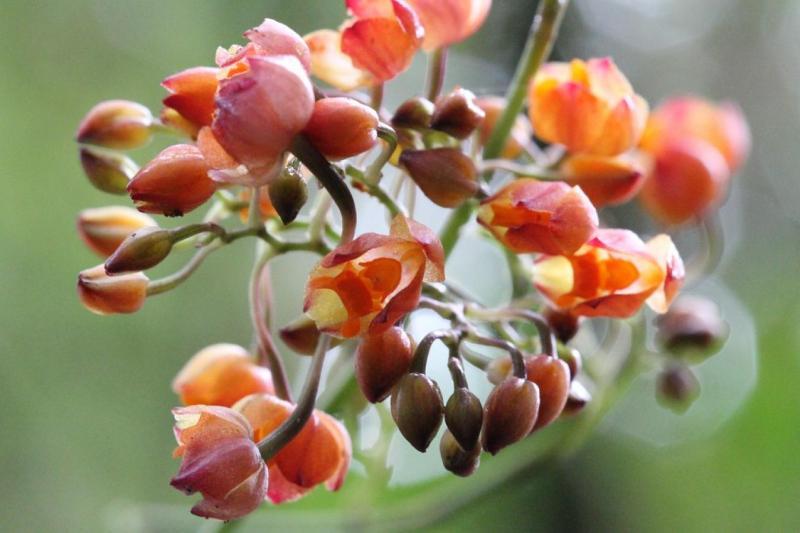Cyrtochilum rhodoneurum
Also known as: The Red Nerved Cyrtochilum or Cochlioda weberbaueriana Neodryas rhodoneura Neodryas herzogii Neodryas weberbaueriana Neodryas densiflora Neodryas latilabia Neodryas mandonii Neodryas jose-kawaii Neodryas sacciana Neodryas reniformis in the subfamily: Epidendroideae
Native to: Peru
General Information
The Red Nerved Cyrtochilum is a sympodial cold to warm growing epiphytic orchid belonging to the sub family Epidendroideae native to Peru.
Plant Description
Sympodial. Grows to 34cm. Each new growth has a single oblong shaped leaf that grows to 3.6-28cm long. Pseudobulbs grow to 2.5-6cm. The plant tends to climb or sprawl with each new growth
Flowers
Numerous blossoms appear during Autumn and Winter
Blooming Season
- Autumn
- Winter
Care Notes
These orchids have a fine root system that can quickly die back if left dry for too long, but also does not like to be kept wet, so water regularly but ensure that the mix is dry before watering.
Climate
These orchids thrive in humid, cool, shady conditions with good airflow, they will be found under dense forest canopies where they will receive moderate sun exposure throughout the year.
When cultivated they will thrive in a cool, sheltered environment such as a shaded greenhouse, or if grown in cooler climates they can be grown in the garden in areas where they are protected from frost and receive shade throughout the year, though they may be able to tolerate some morning sun during winter.
Grows at high elevations. Rainfall ranges from 5mm to 163mm per day, heaviest in July and lightest in January. Humidity ranges from 57% to 78%, highest in August and lowest in January. Temperature ranges from -1C to 23C, highest in May (7C to 23C) and lowest in January (-1C to 20C).Watering
These orchids prefer a wet-dry cycle between waterings, they should be watered frequently but only when the moisture is approaching dryness, where the pot feels light and/or the media looks dry. Keep an eye on mounted orchids in warm weather as they may dehydrate quickly.
Fertiliser
Reduce fertiliser when plant is dormant during Spring.
Potting
These plants are quite forgiving and will do well repotted ever 2-3 years. The mix should be coarse, well draining, and allow space for air to move and for roots to grow.
Alternatively, these plants will also do well mounted to tree fern or cork slabs, or mounted to trees.
Best time for repotting or mounting the orchids is the end of winter when new growths start to appear. Avoid repotting during hot weather,




